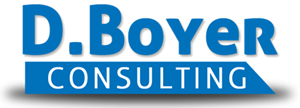Business is mostly conducted via email or phone communications.
Office hours 10:00 a.m. to 6:00 p.m, Mon. - Thurs., and 10:00 a.m. to 2:00 p.m. on Fridays.
SEND EMAIL INQUIRIES DIRECTLY TO:
Dawn.Boyer@me.com
Business is mostly conducted via email or phone communications.
Office hours 10:00 a.m. to 6:00 p.m, Mon. - Thurs., and 10:00 a.m. to 2:00 p.m. on Fridays.
SEND EMAIL INQUIRIES DIRECTLY TO:
Dawn.Boyer@me.com
Business is mostly conducted via email or phone communications.
Office hours 10:00 a.m. to 6:00 p.m, Mon. - Thurs., and 10:00 a.m. to 2:00 p.m. on Fridays.
SEND EMAIL INQUIRIES DIRECTLY TO:
Dawn.Boyer@me.com
What to look for in LinkedIn trainers…don’t settle!
June 14th, 2012 by Dawn Boyer
What to look for from LinkedIn trainers:
I am beginning to see more training classes offered from ‘Social Media Experts’ providing training classes for the LinkedIn social media platform. What concerns me is the trainers are calling themselves Subject Matter Experts (SMEs). When I view their profiles on LinkedIn (‘industrial spying lite’), I can quickly determine they are not really SMEs. It’s evident they don’t practice the social media well with their own profile!
Here’s what to ask yourself in determining if you wish to purchase training course(s) from classes from those who claim to be experts in the LinkedIn social media platform:
1) How many connections does the trainer have? Determine by clicking on the “X Connections” link in their profile. In the results page, approximately 20-21 connections will show on multiple pages for that profile owner. Multiply the number of pages by ~21. Your math results will show how many connections they have. If they have 500+, but under 1,000, they haven’t been practicing good connection activities. They may not really know best practices for multiple invites from valid industry profiles. (I have 6,326+ connections, with 2nd connections reaching 24,131.)
2) How long has the trainer been on LinkedIn? The mark of a SME is 10,000 hours of experience, which equates to 40 hours a week, 52 weeks a year, for about five years. If your trainer has been on LinkedIn less than 2-3 years, they can’t honestly say they are a SME. (I’ve been on LinkedIn since 2004, a few months after Internet inception, so have about eight years of experience.)
3) How many referrals and recommendations does the trainer have on their profile over the course of their employment experience? Are the referrals only for one event (captive audience) or are they spread across several employment experiences? Between one and five in a very short time period or only under one employment experience means they haven’t actively pursued referrals for on LinkedIn – or – the work (training) they are performing isn’t worthy of referrals. (I have 43 referrals spread over a 22-year employment history.)
4) How many applications are loaded into the trainer’s profile? Are those applications ‘active’ (Box.net, SlideShare.com, WordPress blog feed, Twitter feed, Reading List by Amazon, Behance Portfolio, etc.) showing current activity or posts? Is the Twitter feed is updated constantly, have new books been added to the Reading List recently, etc. If the trainer’s profile is slim on apps, they don’t know the value of the apps enough to be teaching others. (I actively use all six LinkedIn apps noted above.)
5) How many groups is the trainer member of in LinkedIn? What industry is the trainer member of related to those groups? The limit is 50 groups and 50 sub-groups and if your trainer has only 5-10 groups showing on their profile, they are not active in social discussions and intercourse with other SMEs in this social media profile. How many groups is the trainer active as a ‘owner/organizer?’ (I have 50 group memberships – many involving Human Resources, Recruiting, Job Sourcing, and education, and 4 sub-group memberships in Business, and am active owner/organizer of three unique topic groups (SME, Statistical Analysis, and Business Entrepreneurship.)
6) What type of connections do your trainers have? What types of industry reps are looking at this trainer? Are the viewers focused all in one industry, e.g., Information Technology, Retail Store Owners, or do they have a wide spread variety of industries – banking, finance, human resources, entrepreneurs, etc.? A quick spin through their connections listing will give you an idea of what types of connections they have, what industries, and whether they are all centered within one geographic location or have an international set of connections.
7) What activities have the trainers been deeply involved with? Are they active on the Q&A forum where they have posted answers to questions regularly? Have they been designated as the ‘best answer’ for any questions to which they have contributed? (I have 131 best answers for questions in multiple categories.) Have they posted questions themselves for others to answer in a relationship building activity to develop more connections? (I have posted 141 questions.)
8) Good instructors use training classes as opportunities to obtain more connections, build relationships within LinkedIn face-to-face initially, and to add to their credentials as a SME.
To summarize, anyone can teach and introductory course on any Social Media site and how to use it. If you want to get the best ROI for your training money and time, ensure the instructor has the credentials, the background, the experience, and the knowledge as a trainer to give you the best value.
Dawn Boyer can be reached at Dawn.Boyer@me.com and is the owner of D. Boyer Consulting, where she: “Optimizes Small Businesses’ Human Assets, SEOs Career Resumes, and Link-You to LinkedIn,” (https://dboyerconsulting.com); providing human resources and business development consulting for small businesses, resume writing, re-writing, and coaching, and training users (groups and individuals) on the use of LinkedIn social media.
Copyright 2012, by Dawn D. Boyer, D. Boyer Consulting
Readers Comments
What to look for in LinkedIn trainers…don’t settle!
June 14th, 2012 by Dawn Boyer
What to look for from LinkedIn trainers:
I am beginning to see more training classes offered from ‘Social Media Experts’ providing training classes for the LinkedIn social media platform. What concerns me is the trainers are calling themselves Subject Matter Experts (SMEs). When I view their profiles on LinkedIn (‘industrial spying lite’), I can quickly determine they are not really SMEs. It’s evident they don’t practice the social media well with their own profile!
Here’s what to ask yourself in determining if you wish to purchase training course(s) from classes from those who claim to be experts in the LinkedIn social media platform:
1) How many connections does the trainer have? Determine by clicking on the “X Connections” link in their profile. In the results page, approximately 20-21 connections will show on multiple pages for that profile owner. Multiply the number of pages by ~21. Your math results will show how many connections they have. If they have 500+, but under 1,000, they haven’t been practicing good connection activities. They may not really know best practices for multiple invites from valid industry profiles. (I have 6,326+ connections, with 2nd connections reaching 24,131.)
2) How long has the trainer been on LinkedIn? The mark of a SME is 10,000 hours of experience, which equates to 40 hours a week, 52 weeks a year, for about five years. If your trainer has been on LinkedIn less than 2-3 years, they can’t honestly say they are a SME. (I’ve been on LinkedIn since 2004, a few months after Internet inception, so have about eight years of experience.)
3) How many referrals and recommendations does the trainer have on their profile over the course of their employment experience? Are the referrals only for one event (captive audience) or are they spread across several employment experiences? Between one and five in a very short time period or only under one employment experience means they haven’t actively pursued referrals for on LinkedIn – or – the work (training) they are performing isn’t worthy of referrals. (I have 43 referrals spread over a 22-year employment history.)
4) How many applications are loaded into the trainer’s profile? Are those applications ‘active’ (Box.net, SlideShare.com, WordPress blog feed, Twitter feed, Reading List by Amazon, Behance Portfolio, etc.) showing current activity or posts? Is the Twitter feed is updated constantly, have new books been added to the Reading List recently, etc. If the trainer’s profile is slim on apps, they don’t know the value of the apps enough to be teaching others. (I actively use all six LinkedIn apps noted above.)
5) How many groups is the trainer member of in LinkedIn? What industry is the trainer member of related to those groups? The limit is 50 groups and 50 sub-groups and if your trainer has only 5-10 groups showing on their profile, they are not active in social discussions and intercourse with other SMEs in this social media profile. How many groups is the trainer active as a ‘owner/organizer?’ (I have 50 group memberships – many involving Human Resources, Recruiting, Job Sourcing, and education, and 4 sub-group memberships in Business, and am active owner/organizer of three unique topic groups (SME, Statistical Analysis, and Business Entrepreneurship.)
6) What type of connections do your trainers have? What types of industry reps are looking at this trainer? Are the viewers focused all in one industry, e.g., Information Technology, Retail Store Owners, or do they have a wide spread variety of industries – banking, finance, human resources, entrepreneurs, etc.? A quick spin through their connections listing will give you an idea of what types of connections they have, what industries, and whether they are all centered within one geographic location or have an international set of connections.
7) What activities have the trainers been deeply involved with? Are they active on the Q&A forum where they have posted answers to questions regularly? Have they been designated as the ‘best answer’ for any questions to which they have contributed? (I have 131 best answers for questions in multiple categories.) Have they posted questions themselves for others to answer in a relationship building activity to develop more connections? (I have posted 141 questions.)
8) Good instructors use training classes as opportunities to obtain more connections, build relationships within LinkedIn face-to-face initially, and to add to their credentials as a SME.
To summarize, anyone can teach and introductory course on any Social Media site and how to use it. If you want to get the best ROI for your training money and time, ensure the instructor has the credentials, the background, the experience, and the knowledge as a trainer to give you the best value.
Dawn Boyer can be reached at Dawn.Boyer@me.com and is the owner of D. Boyer Consulting, where she: “Optimizes Small Businesses’ Human Assets, SEOs Career Resumes, and Link-You to LinkedIn,” (https://dboyerconsulting.com); providing human resources and business development consulting for small businesses, resume writing, re-writing, and coaching, and training users (groups and individuals) on the use of LinkedIn social media.
Copyright 2012, by Dawn D. Boyer, D. Boyer Consulting













